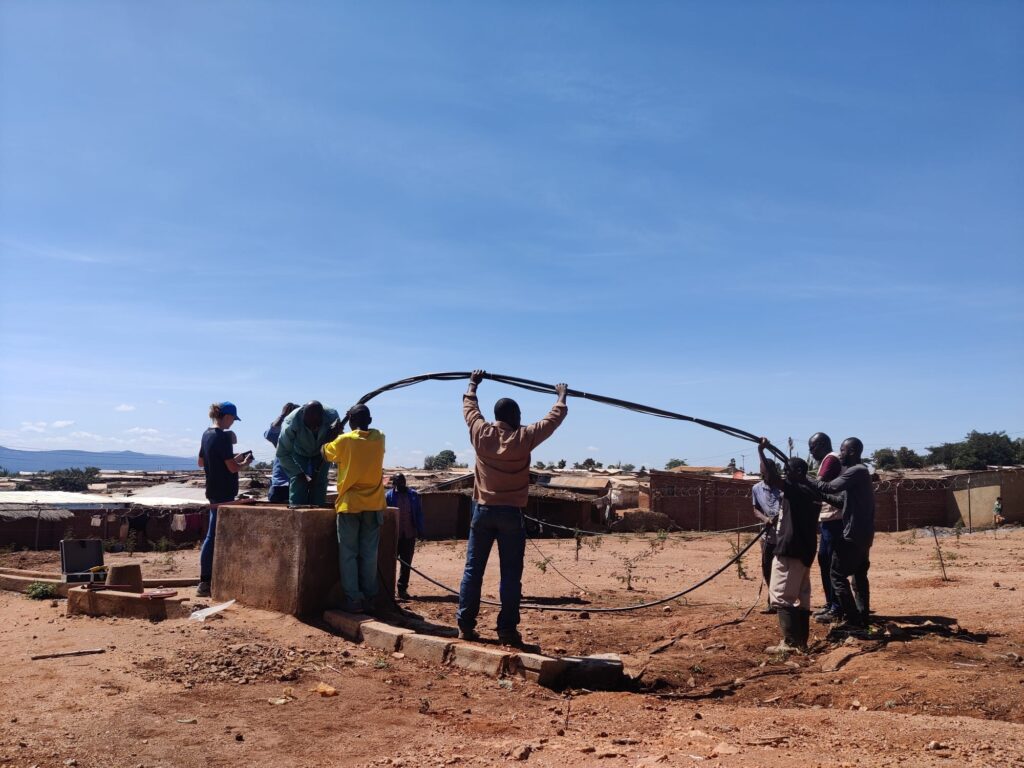Malawi: Remote Monitoring System Installation
In June 2023 Flow-5 installed a real time monitoring system for the water supply system at Dzaleka Refugee Camp in Malawi.
Since 2019 Flow-5 have been working with the United Nations High Commissioner for Refugees (UNHCR) and Welthungerhilfe (WHH) to improve the camp’s water supply situation. The camp’s population is continuously increasing, and the existing water supplies were not able to meet demand.
The installation of this monitoring system is the culmination of 4 years work on this site. Our work to date has included geophysical surveys, multiple rounds of hydrogeological testing and conceptualisation, drilling and testing of new water supply boreholes and upgrading and improving the use of existing boreholes (see other case studies reported here and here).
The Site Setting
The camp is set at a high elevation in rugged crystalline basement terrain, which brings challenges from a water supply point of view. The only currently viable source of water for the camp is groundwater held in the basement rock unit; in the Dzaleka area this rock is quite strongly fractured, faulted and weathered and is able to store and transmit locally significant amounts of water.
However, despite the high yields seen at a number of boreholes, this fractured rock type ‘aquifer’ as a whole is highly heterogeneous, has a low overall storage capacity and receives a limited amount of recharge. Our assessments highlighted that the long-term sustainability of abstraction from this ‘aquifer’ is a potential risk. The groundwater resource could easily be depleted and impacted by abstraction if not properly managed; potential impacts could be exacerbated in future by climate changes (especially longer dry periods) and potential increased abstraction if the camp population continues to grow.
The Monitoring System
To manage this risk, Flow-5 encouraged the client to install a monitoring system to keep a close eye on groundwater levels, abstraction rates and water quality. Flow-5 worked on a comprehensive monitoring plan for the site, outlining what needs to be monitored, why it needs to be monitored and how it can be monitored, as well as ‘trigger levels’ for key parameters over a 10-year period. Fortunately, this coincided with the client having clear understanding of the importance of monitoring and a strong interest in real-time, remote monitoring systems.
The result was the installation of a real-time monitoring system which gives a constant feed of water level and flow rate data from 10 key abstraction boreholes. In addition to this, other parameters such as Electronic Conductivity (EC), chlorine concentration and tank water levels are monitored at key parts of the system.
Data is transmitted wirelessly from each sensor to a central gateway (via LoRaWAN) at distances of up to 5km, where it is forwarded to the network server. All data is permanently stored and can be viewed in real time, remotely from anywhere (on any device with an internet connection) through a portal / app with customised dashboards.
This system allows for short term functionality issues (such as breakdown or exceedances of trigger levels) to be swiftly detected and diagnosed (including customised alarms and notifications), as well as providing an invaluable source of data for long-term review of the system performance and water resource response.
Please contact Flow-5 if you would like to know more about the type of remote, real time monitoring system described here.


